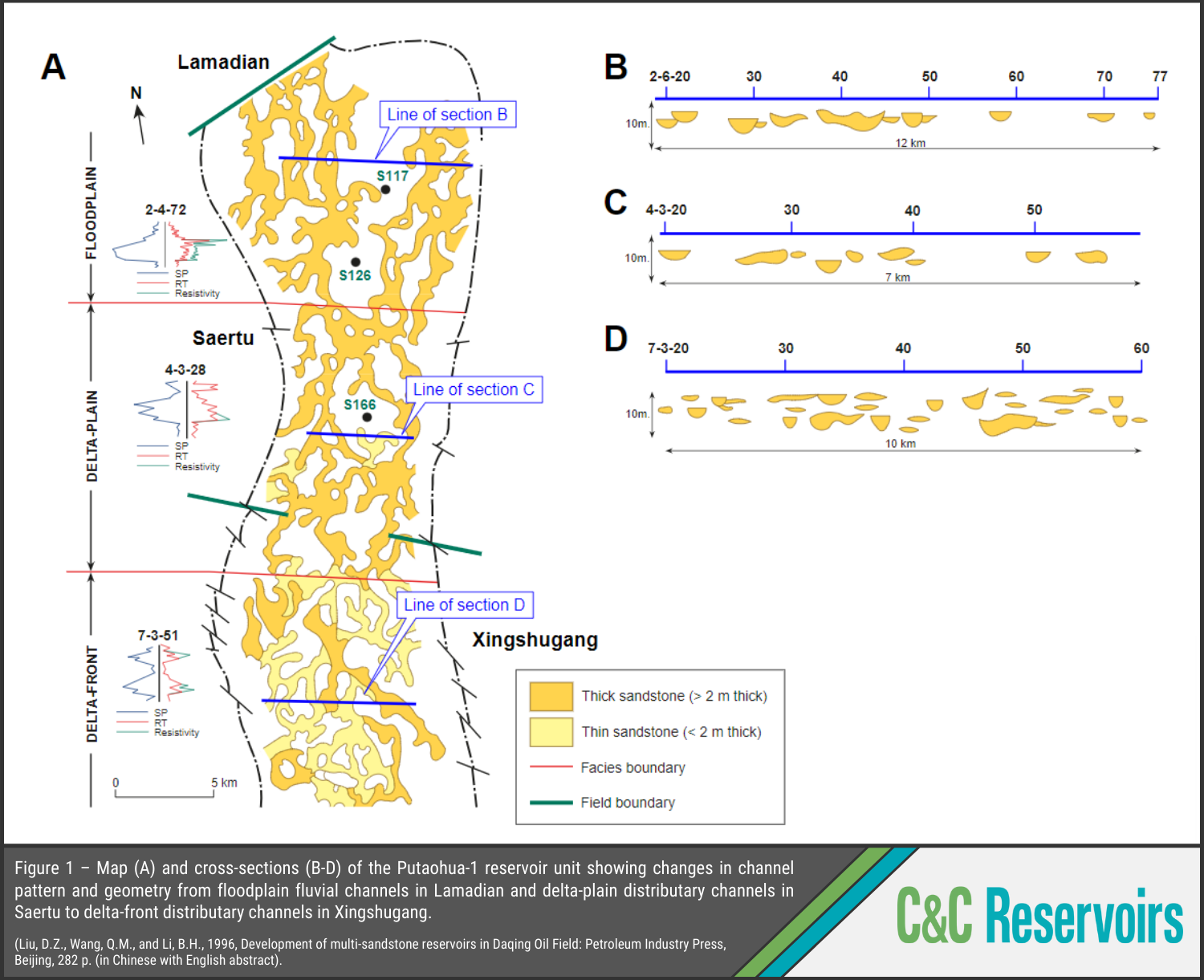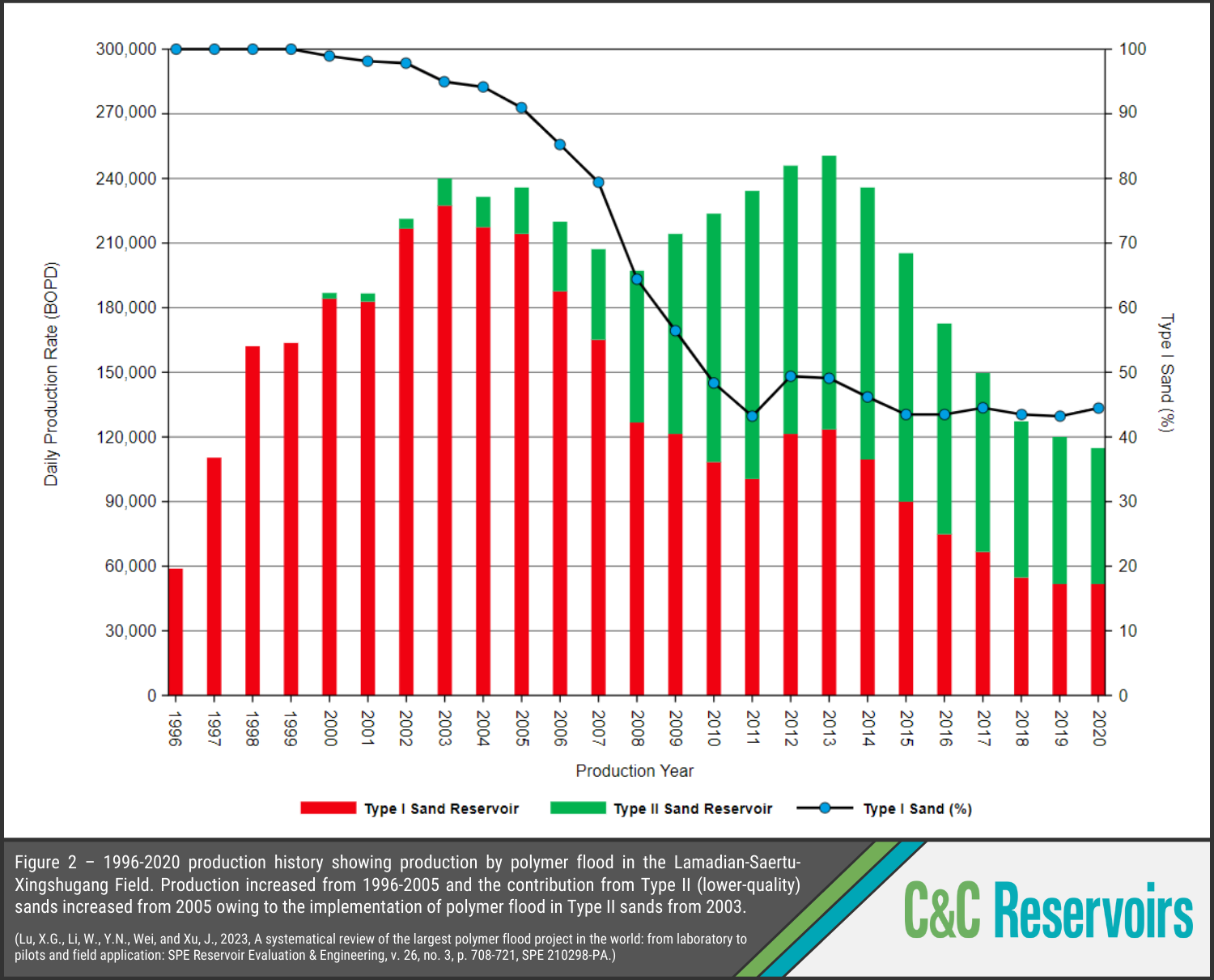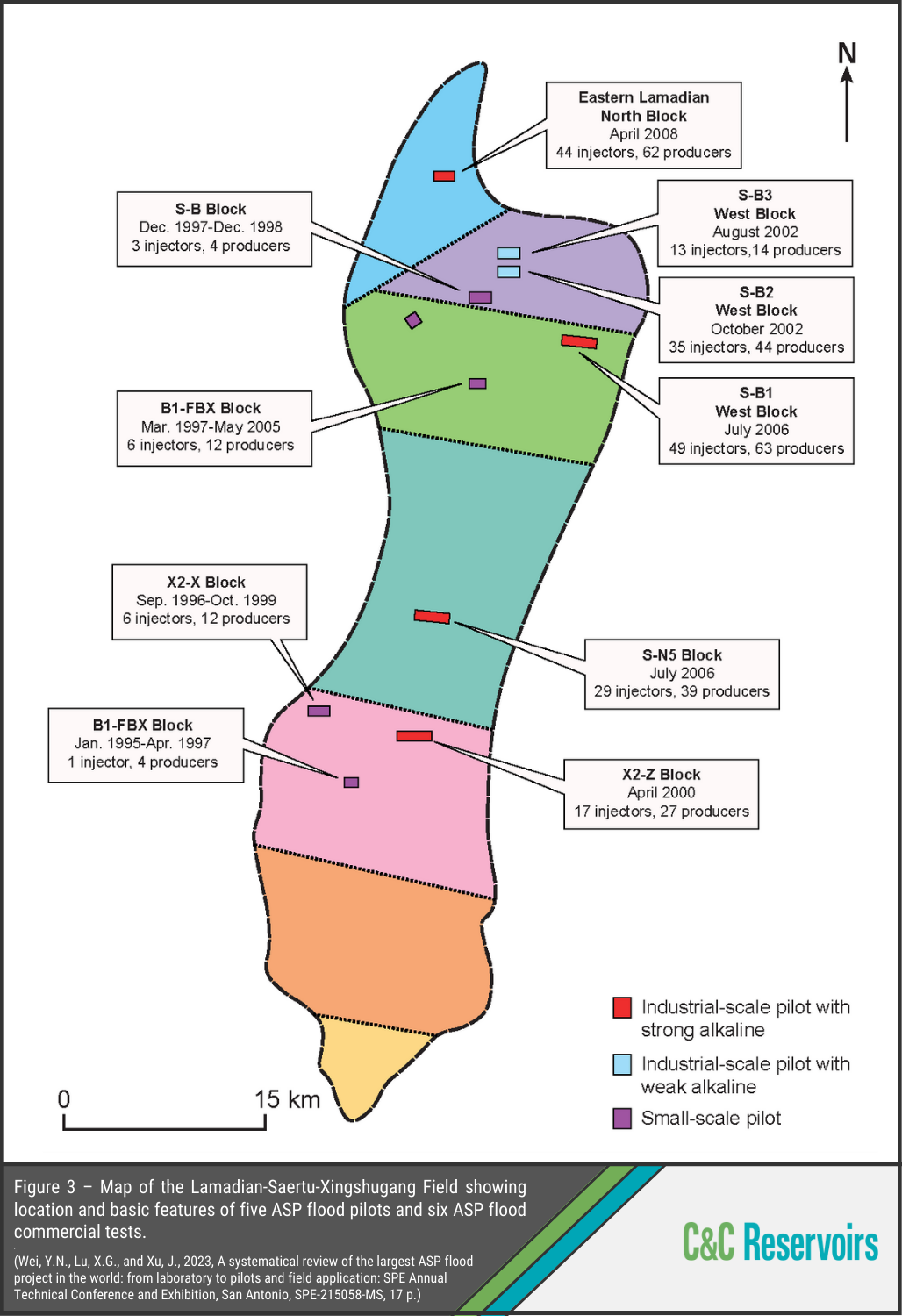The Daqing Complex
Analogue Spotlight
Daqing, the largest oil producer in China, is a complex of seven separate fields on a large inversion anticline. The three largest (Lamadian, Saertu and Xingshugang) are in pressure communication and contain 30.5 BBO (85% of Daqing’s STOIIP) in distributary-channel and lacustrine-delta sandstones of the Cretaceous Saertu, Putaohua and Gaotaizi reservoirs (Fig. 1). Waterflooding, zonal injection and infill drilling are the principal methods that contribute to an EUR of 17.8 BBO. The fields are renowned for their large-scale polymer and alkaline-surfactant-polymer (ASP) floods.
Waterflooding was started six months after the trial production period in 1960. Zonal injection and pattern modifications greatly improved the drainage of stacked, laterally discontinuous and variably permeable sandbodies before polymer and ASP flooding began in 1994. The vertical sweep efficiency under polymer flooding was 29% higher than that of conventional waterflooding, resulting in local water-cut reductions of up to 30% and an incremental recovery of ~12% by 2021. Polymer flooding had been applied to 2427 injectors and 2916 producers by 2004 and accounted for 25% of the oil produced in 2005. Most importantly, it boosted production from the lower-quality sandstones (Fig. 2).
Cumulative production from the ASP-flooded blocks (Fig. 3) had reached 316 MMBO by 2021 and 20% of that was attributed to ASP flooding. Locally, higher incremental recoveries have been achieved by optimising the ASP flood to the local geological conditions. Methane was added to the ASP mixture in six wells during 1996-2000. This improved the mixture’s sweep efficiency and increased the recovery factor by 26% in an area of thinly bedded reservoir units. Elsewhere, a small injector-producer distance of 75 m was tested and increased the recovery factor of that area by 25%.



